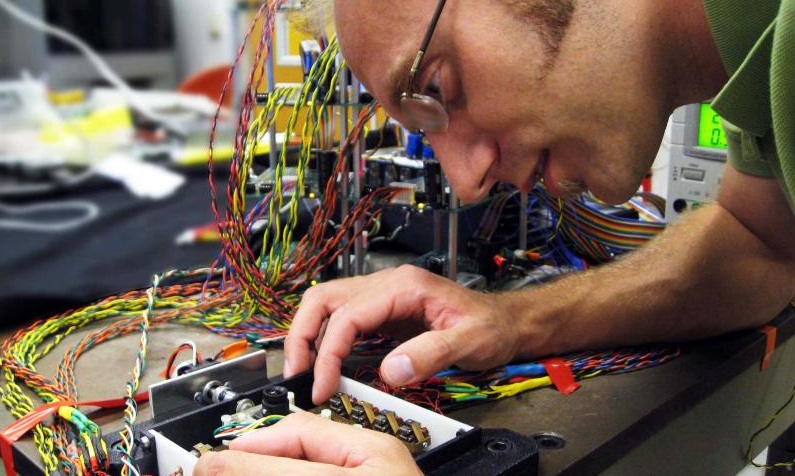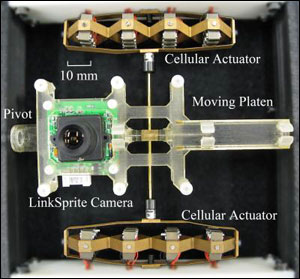Researchers Develop Robotic Camera That Accurately Mimics Eye Movement

Researchers at the Woodruff School of Mechanical Engineering at the Georgia Institute of Technology have succeeded in developing a robotic camera system equipped with muscle-like action that replicates the muscle motion of the human eye in ways never before seen. It is hoped the milestone will eventually make robotic tools safer, as well as making camera feeds from robots more intuitive to use.
The scientists behind the research, which is being conducted by Ph.D. candidate Joshua Schultz under the direction of assistant professor Jun Ueda, have also expressed their belief that the development will give us an improved understanding of eye movement, and have wide-ranging applications; from industrial robots, medical and rehabilitation robots to intelligent assistive robots. Did someone say T-1000?
 In utilising a cellular actuator concept that is inspired by our own biological muscle structure, the team used piezoelectric materials that expand or contract when electricity is applied to them. Meaning input signals are seamlessly converted into motion, which in turn allowed the team to overcome some of the constraints of a cable-driven eye. Here, the piezoelectric cellular actuators share more common similarities to real human muscle.
In utilising a cellular actuator concept that is inspired by our own biological muscle structure, the team used piezoelectric materials that expand or contract when electricity is applied to them. Meaning input signals are seamlessly converted into motion, which in turn allowed the team to overcome some of the constraints of a cable-driven eye. Here, the piezoelectric cellular actuators share more common similarities to real human muscle.
“For a robot to be truly bio-inspired, it should possess actuation, or motion generators, with properties in common with the musculature of biological organisms,” said Schultz. “The actuators developed in our lab embody many properties in common with biological muscle, especially a cellular structure. Essentially, in the human eye muscles are controlled by neural impulses. Eventually, the actuators we are developing will be used to capture the kinematics and performance of the human eye.”
Read more about the research here, as reported by Science Daily.
Richard Birkett